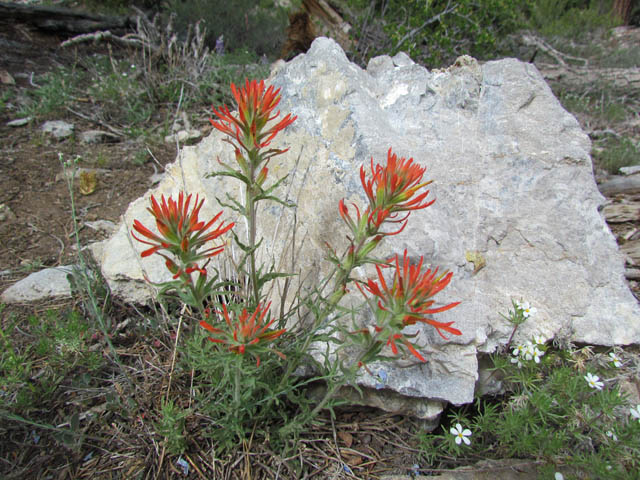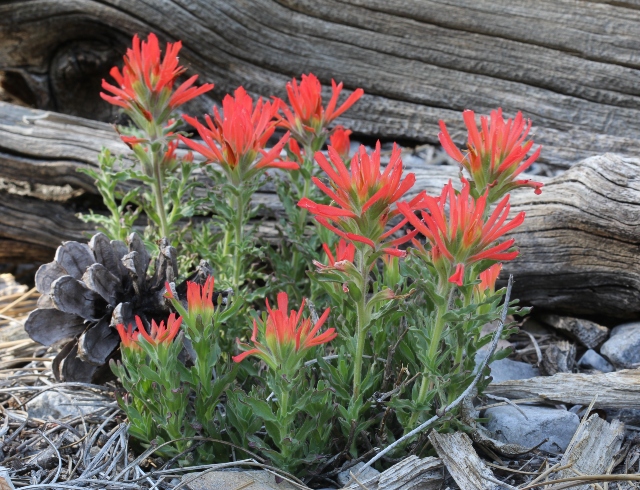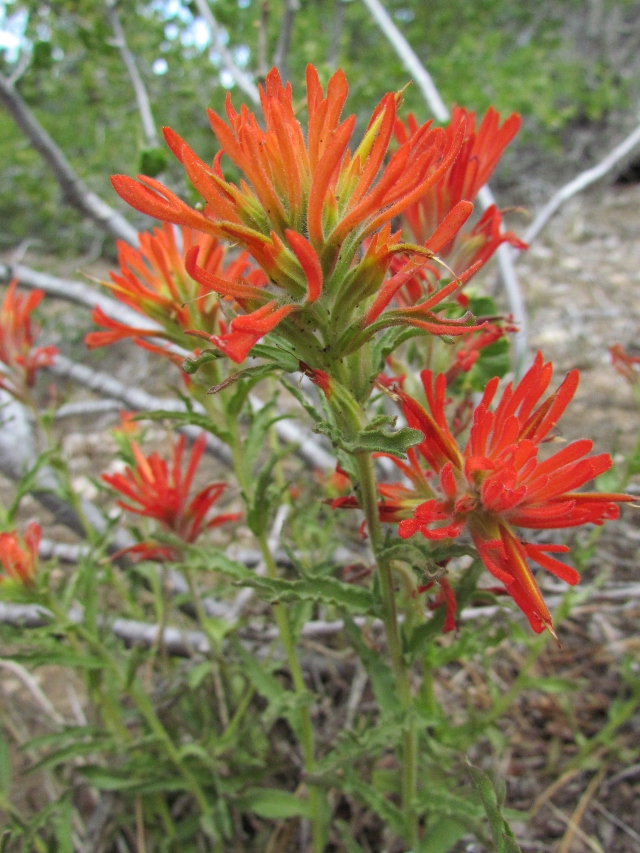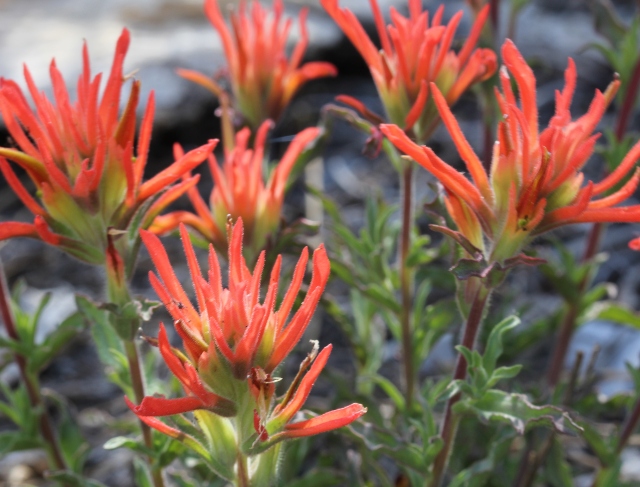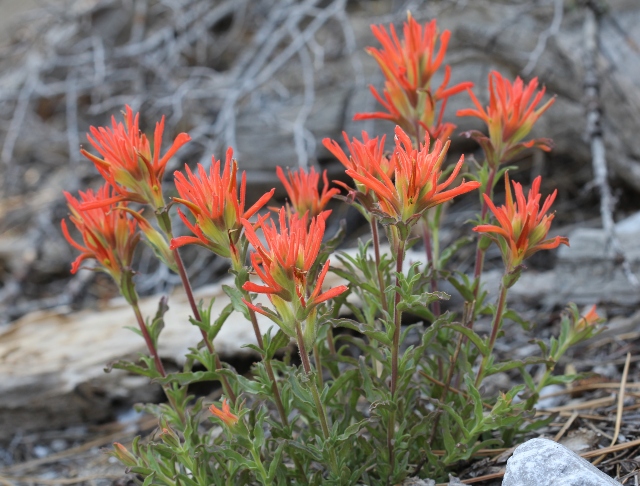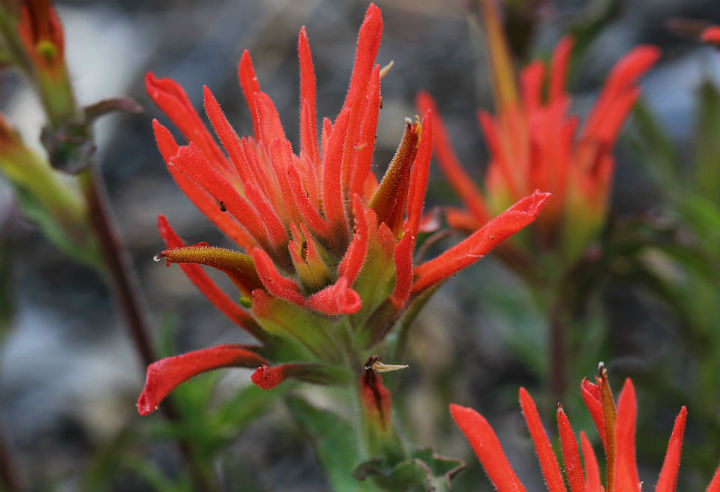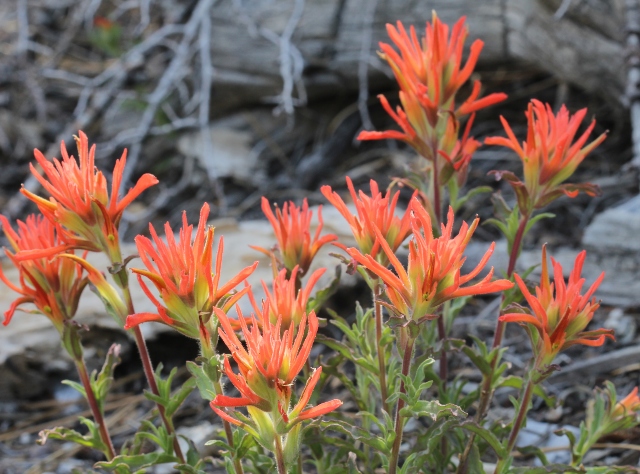While hiking on Mount Charleston in Nevada I came across a number of wildflowers; this one was particularly distinctive.
Indian Paintbrush is a hemiparasite, meaning that although it is green and can photosynthesize, it also has the ability to sequester nutrients from other organisms, in this case, perennial grasses.
Despite being parasites for part of their lives, these plants, like other flowering plants, rely on pollinators for reproduction. A variety of insects visit Indian Paintbrush flowers, especially bees. This is somewhat surprising since the color red is difficult for insects to see.
However, like most red flowers, it is especially adapted for pollination by hummingbirds. Hummingbirds have long bills that allow them to reach the nectar rewards at the end of long, tubular flowers.
Ironically, this plant was used by Native Americans as both a love charm in food and as a poison used to against their enemies, as this species is known to have toxic properties.
Indian Paintbrush generally prefers sunlight and moist, well drained soils. Their root systems connect with and grow into the root systems of other planets to harvest nutrients from their host plants. For this reason, they are not able to be transplanted easily.
That red color we so often admire is actually bracts, or specially modified leaves, as opposed to flowers. The plant’s true flowers are actually smaller, slender green growths hidden among the bracts.

